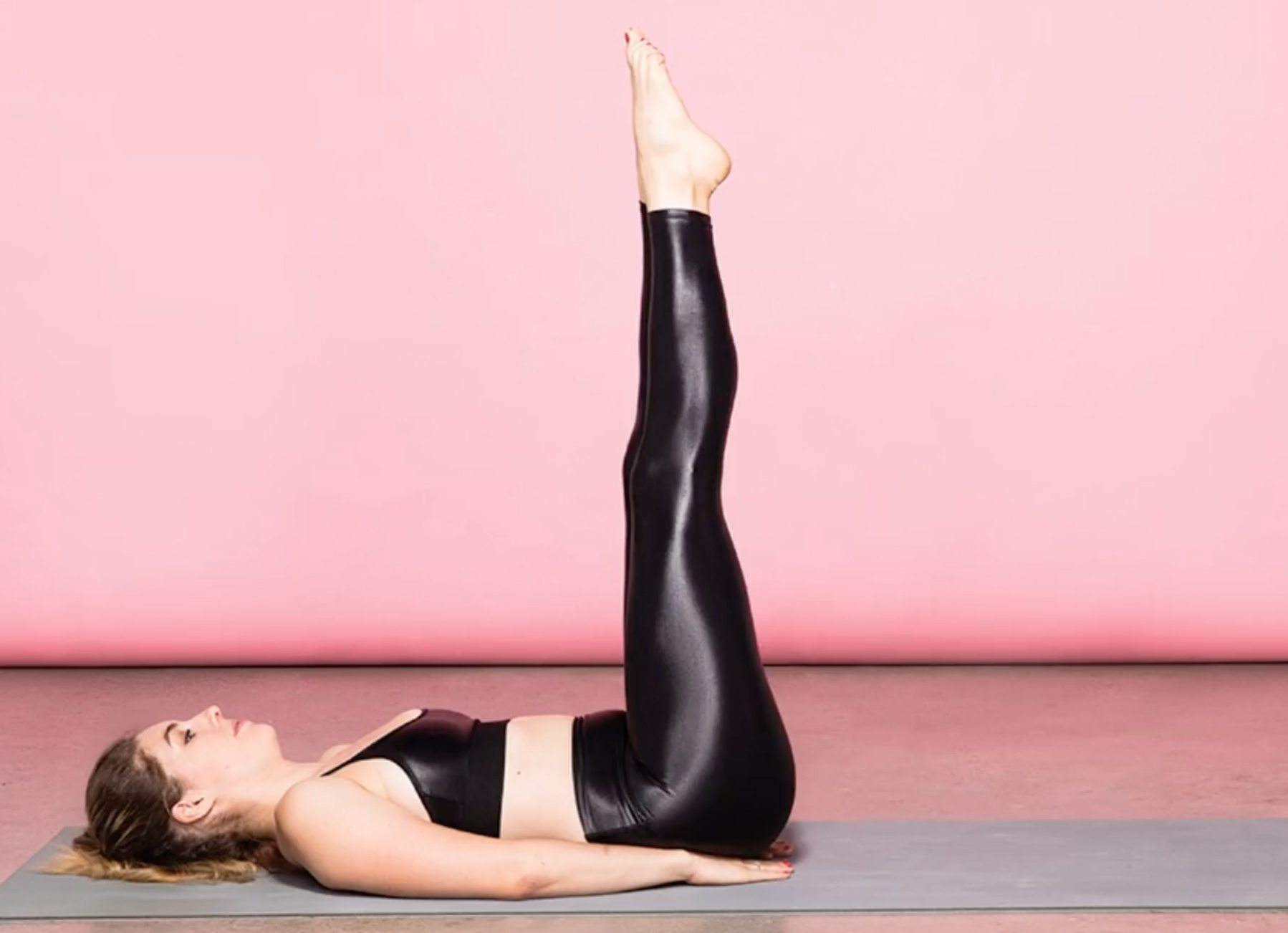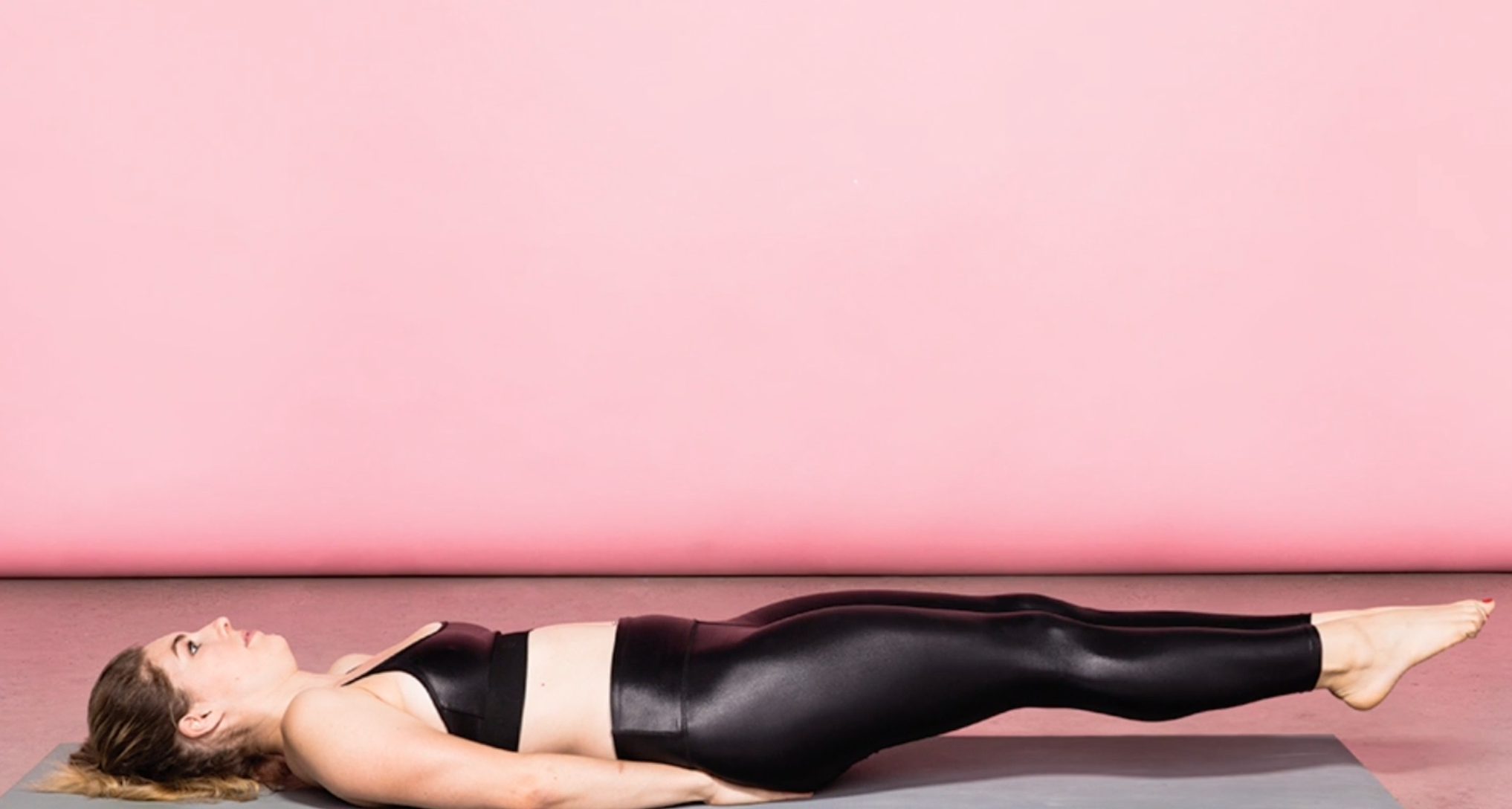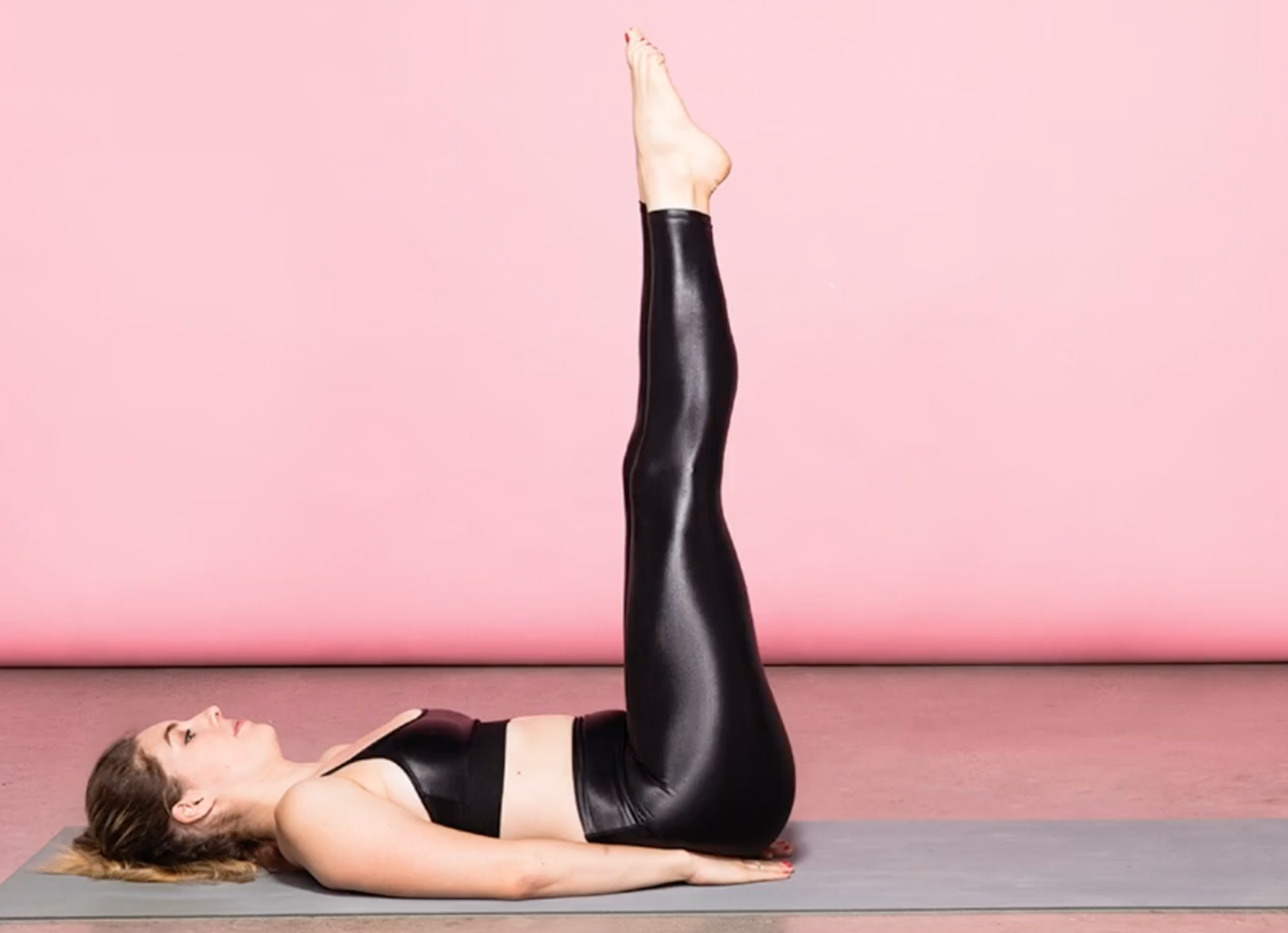
Photo by Kathryn Wirsing
Not only will leg raises sculpt the hell out of your core, but they will also improves the flexibility of your hip flexors—crucial for aiding every step you take and every squat you make.
How To Do Lying Leg Raises



How to: Lie on a mat on the floor, face up, legs extended. Place your hands underneath your lower back and glutes so your pelvis is supported. Begin to raise your legs toward the ceiling, pressing your thighs together and keeping the legs straight. Lift until your hips are fully flexed and you can’t go any higher with straight legs, then lower back down and repeat. Watch a demo here.
Form note: Move slow and with control, making sure not to arch your back at any point in the move, says Jenna Epperly, ACE-certified trainer at Jim White Fitness & Nutrition Studios in Virginia Beach, VA.
Reps/sets you should do to see results: Repeat 15 to 20 times for three to four sets. If performing solo (not in a circuit), rest 30 seconds between sets.
The Benefits Of Lying Leg Raises
Lying leg raises are touted as a killer abs exercise—because they are. But your hip flexors actually reap some major benefits of this move, says Epperly. So don’t be surprised if your hips feel a bit of the burn during this one.
Strong hip flexors will improve your runs, your spin game, and your squat, so this is a great move to add to any routine—regardless of your activity of choice, says Epperly.
Lying leg raises can also help alleviate low back pain, she adds, since it improves the overall strength and stabilization of your core.
Make Lying Leg Raises Part Of Your Workout
Aim to work lying leg raises into your routine two to three times a week. “It’s such a versatile exercise, you really have the freedom to add it in whatever way you’d like,” says Epperly. Leveraging it in a workout that targets the opposing muscle groups (the lower back, for instance) is a great choice. But Epperly's go-to is adding lying leg raises at the end of an abs circuit workout.
If the traditional method of raising and lowering completely straight legs is too hard (hint: when you can’t keep your back flat), start by performing the move with bent legs, says Epperly.
When the move with straight legs feels like a breeze, there are a few options for how to make it more difficult:
- Don’t allow your legs to fully touch the ground at the end of the move.
- Add a dumbbell in between your feet (or ankle weights) during the traditional lift-and-lower.
- For max challenging, grab onto a pullup bar and perform hanging leg raises.